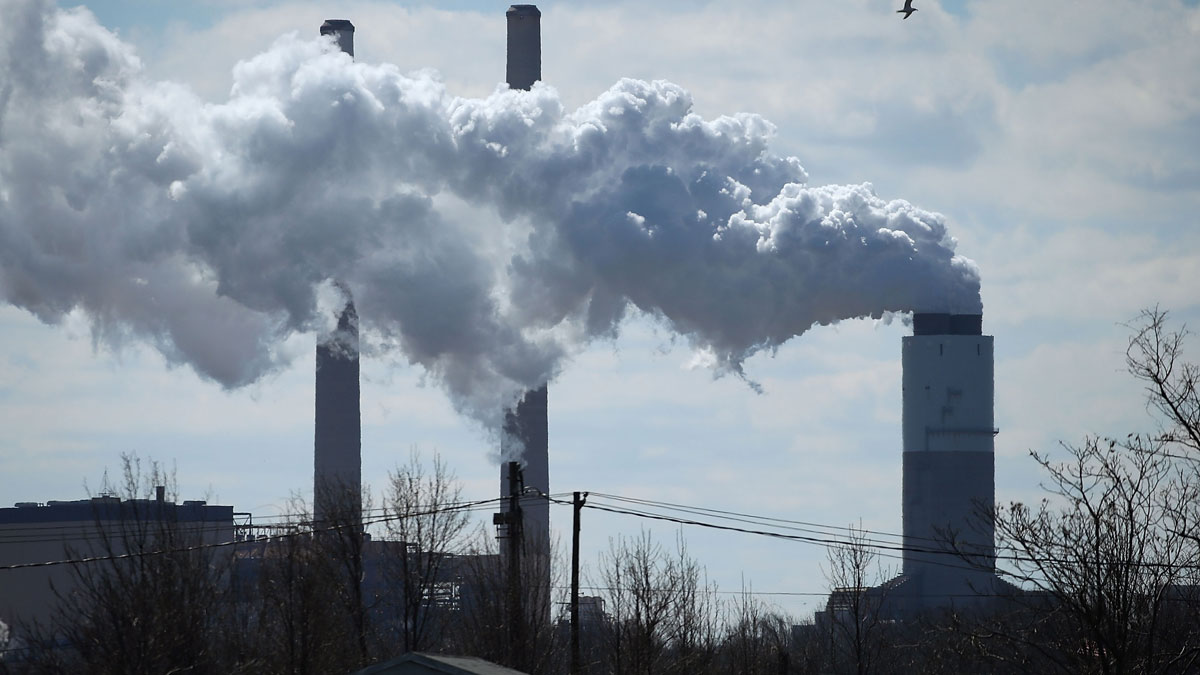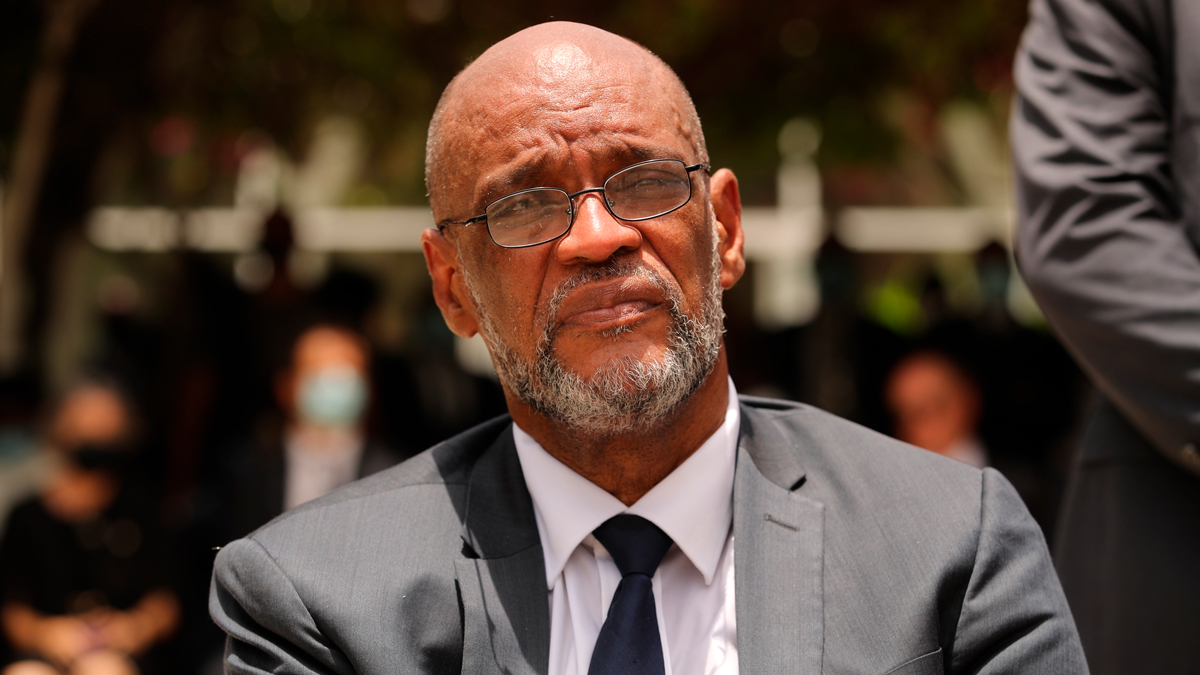What to Know
- Hurricane Harvey made first landfall as Cat. 4 hurricane Friday evening, and lingered over the Houston area, causing "catastophic" flooding
- Two people were killed as the storm cut through the Texas coast and dropped torrential rains.
- Houston officials said more than 1,000 people had to be rescued from the flood waters.
Harvey spun deeper into Texas and unloaded extraordinary amounts of rain Saturday night and Sunday morning after the once-fearsome hurricane crashed into vulnerable homes and businesses along the coastline in a blow that killed at least two people and injured up to 14.
Houston-area officials said they already performed more than 1,000 water rescues and nearly 1,000 more were in queue early Sunday as torrential rain from Harvey in the city and across southeast Texas. The National Weather Service is asking people to get on their roofs if the highest floor of the house becomes "dangerous."
William P. Hobby airport in Houston said all flights were canceled Sunday, due to standing water on runways. All commercial flights from George Bush Intercontinental Airport were also canceled.
Throughout the region between Corpus Christi and Houston, many people feared that toll was only the beginning. Authorities did not know the full scope of damage because weather conditions prevented emergency crews from getting into the hardest-hit places. And they dreaded the destruction that was yet to come from a storm that could linger for days and unload more than 40 inches of rain on cities, including dangerously flood-prone Houston, the nation's fourth-largest.
In the island community of Port Aransas, population 3,800, officials were unable to fully survey the town because of "massive" damage. Police and heavy equipment had only made it into the northernmost street.
"I can tell you I have a very bad feeling and that's about it," said Mayor Charles Bujan, who had called for a mandatory evacuation but did not know how many heeded the order.
U.S. & World
Some of the worst damage appeared to be in Rockport, a coastal city of about 10,000 that was directly in the storm's path. The mayor said his community took a blow "right on the nose" that left "widespread devastation," including homes, businesses and schools that were heavily damaged. Some structures were destroyed.
Rockport's roads were a mess of toppled power poles. A trailer blocked much of one major intersection. Wood framing from ripped-apart houses was strewn along Route 35 on the town's southern end.
Harvey's relentless wind tore the metal sides off the high school gym and twisted the steel door frame of its auditorium.
"We're still in the very infancy stage of getting this recovery started," said Aransas County spokesman Larry Sinclair.
Rockport Mayor Charles "C.J." Wax told The Weather Channel that the city's emergency response system had been hampered by the loss of cellphone service and other forms of communication.
A day earlier, Rockport Mayor Pro Tem Patrick Rios offered ominous advice, telling people who chose not to evacuate to mark their arms with Sharpie pens, implying that the marks would make it easier for rescuers to identify them.
One person was killed in Aransas County when in a fire at home during the storm, county Judge C.H. "Burt" Mills Jr. said. A second person died in flooding in Harris County, where Houston is located.
Gary Norman, a spokesman for the Houston emergency operations center, said late Saturday that the person was a woman appeared to have gotten out of her vehicle in high water, though authorities had not confirmed a cause of death. She was found by neighbors about 30 yards away from her vehicle, and Norman said she was pronounced dead at the scene by a doctor who was in the area.
Mills also said as many as 14 people suffered minor injuries in his county, including slips and falls, scrapes and a broken leg.
About 300,000 customers were without power statewide. Gov. Greg Abbott said it would probably be several days before electricity is restored.
Meanwhile, the storm was barely moving. Rainfall totals varied across the region, with Corpus Christi and Galveston receiving around 3 inches, Houston 7 and Aransas 10. Tiny Austwell got 15 inches.
In Houston, authorities were pleading with people not to leave their homes as a flood emergency was declared. Harris County authorities said they have reports of rooftop flood levels and urged residents not to go into their attics.
"This is the worst flooding we have ever seen," Harris County Flood Control Management's Jeff Linder said.
Houston city officials tweeted that their 911 services were at capacity.
"The streets are treacherous," Houston Mayor Sylvester Turner said.
Elsewhere in the storm's immediate aftermath, the Coast Guard had rescued 20 people from boats and barges in distress, said Capt. Tony Hahn, commander of the Corpus Christi sector.
The Corpus Christi port was closed with extensive damage. Because the city is the third-largest petrochemical port in the nation, the agency will be on the lookout for spills, Hahn said.
The fiercest hurricane to hit the U.S. in more than a decade came ashore late Friday about 30 miles northeast of Corpus Christi as a mammoth Category 4 storm with 130 mph winds.
Harvey weakened to a tropical storm by midday Saturday.
By 4 a.m. Sunday, the National Hurricane Center said Harvey continued to cause "catastrophic flooding in southeastern Texas." Harvey's maximum sustained winds were about 45 mph, but the storm was practically stationary as it dumped torrential rain over an area that included Houston.
The hurricane posed the first major emergency management test of President Donald Trump's administration.
Trump met with his Cabinet and other senior administration officials to discuss the federal response to the damage and flooding, the White House said Saturday in a statement.
The president held a video conference from Camp David in which he instructed departments and agencies to "stay fully engaged and positioned to support his number one priority of saving lives," the statement said.
Trump, who on Friday signed a federal disaster declaration for coastal counties, also reminded department heads that the full impact of the storm will not be apparent for days. On Twitter, he commended the head of the Federal Emergency Management Agency for his handling of the disaster.
In Corpus Christi, the major city closest to the storm's center, wind whipped palm trees and stinging sheets of horizontal rain slapped against hotels and office buildings along the seawall as the storm made landfall.
Daybreak revealed downed lamp posts and tree limbs and roof tiles torn off buildings. Along Interstate 45 leaving Galveston, the rain was so intense that drivers stopped under bridges because they could not see in front of them.
Rain fell on Houston at nearly 3 inches an hour, leaving some streets and underpasses underwater. The many drainage channels known as bayous that carry excess water to the Gulf were flowing freely and rising.
"Flooding is a minor issue so far," Harris County Judge Ed Emmett, the chief administrator of the county that includes Houston, said. "Most of the watersheds are well within banks, but we're not out of this."
Francisco Sanchez, with the Harris County Emergency Management Office, said the storm would be around for a while.
"Someone is going to get those very high rainfall totals," he said. "Hopefully it's not us, but we're in that possibility area."
South of the city, about 4,500 inmates were evacuated from three state prisons in Brazoria County because the nearby Brazos River was rising.
The turbulent weather extended into southern Louisiana, where motorists were cautioned about the potential for high water, road hazards, high winds and tornadoes.
Harvey came ashore as the fiercest hurricane to hit the U.S. in 13 years and the strongest to strike Texas since 1961's Hurricane Carla, the most powerful Texas hurricane on record.
The storm's approach sent tens of thousands of people fleeing inland.
Just hours before landfall, the governor and Houston leaders issued conflicting statements on evacuation.
The governor urged more people to flee, but Houston officials recommended no widespread evacuations, citing greater danger in having people on roads that could flood and the fact that the hurricane was not taking direct aim at the city.
The last Category 4 storm to hit the U.S. was Hurricane Charley in August 2004 in Florida.
Associated Press writers Michael Graczyk, Juan Lozano and Nomaan Merchant in Houston; Tammy Webber in Chicago; David Phillip in Dickinson, Texas; and Jamie Stengle, David Warren and Claudia Lauer and in Dallas contributed to this report.



